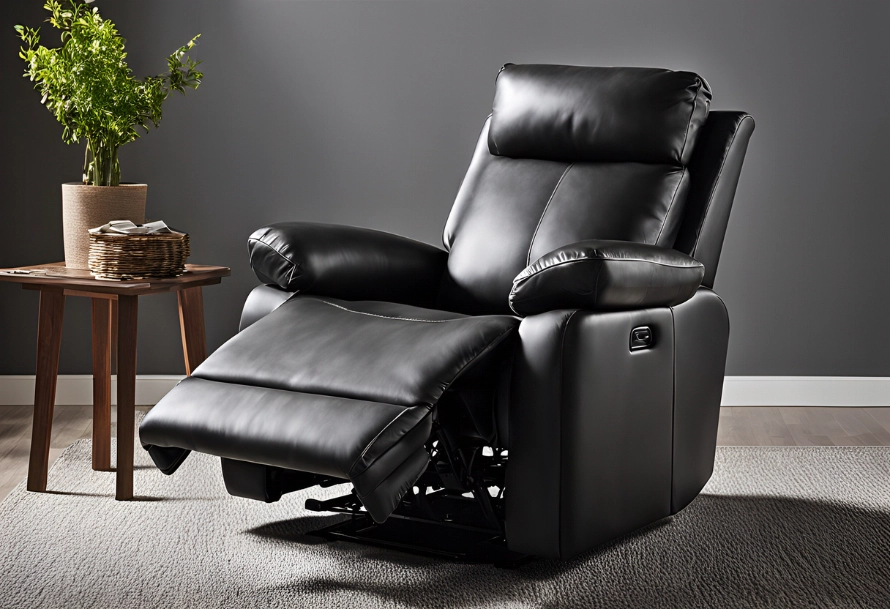Moving a recliner by yourself can seem like a daunting task. These pieces of furniture are often bulky and heavy, making them difficult to maneuver.
However, with the right approach and tools, it’s entirely possible to move a recliner on your own. This guide will provide you with practical tips and strategies to help you do just that.
We’ll cover everything from assessing your recliner, preparing for the move, to reassembling and positioning your recliner in its new location.

So, if you’re wondering “how do you move a recliner by yourself?”, you’ve come to the right place. Let’s get started.
Contents
- 1 Assessing Your Recliner
- 2 Preparing for the Move
- 3 Clearing the Path
- 4 Disassembling the Recliner (If Possible)
- 5 Gathering Necessary Equipment
- 6 Lifting Techniques for Solo Moving
- 7 Using Furniture Sliders and Moving Blankets
- 8 Maneuvering Through Doorways and Tight Spaces
- 9 Utilizing a Dolly or Hand Truck
- 10 Securing the Recliner for Transport
- 11 Reassembling and Positioning Your Recliner
- 12 Final Checks and Safety Precautions
- 13 Conclusion: Enjoying Your Recliner in Its New Space
Assessing Your Recliner
Before you begin, take a moment to assess your recliner’s size and weight. This helps determine the difficulty level and what tools you might need.
Check if the recliner has removable parts, as this will make it easier to transport. Understanding the structure and mechanics will also aid in ensuring a smooth move without unnecessary complications.
Preparing for the Move
To begin, ensure your path is clear from the recliner’s current position to its new spot. Remove any potential obstacles such as rugs or small furniture pieces.
Take precise measurements of doorways and hallways to confirm the recliner will fit through them. If not, plan an alternative route to avoid damaging your walls or the recliner itself.
Prepare your workspace by gathering the necessary equipment and tools. Having everything on hand will help streamline the moving process.
Here’s a quick list to keep in mind:
- Moving blankets or pads
- Furniture sliders
- A dolly or hand truck
- Straps or bungee cords
With these steps completed, you’re well on your way to a successful move!
Clearing the Path
Start by removing any obstacles that might obstruct your route. This includes lifting rugs and moving any floor decorations that could cause tripping. A clear path will minimize the risk of accidents and damage.
Ensure you have a direct and obstacle-free line from the recliner’s original location to its new spot. Consider potential challenges like tight corners and narrow hallways. Planning your path in advance will make the recliner move smoother and less stressful.
Disassembling the Recliner (If Possible)
Not all recliners come apart easily, but some are designed for disassembly. Check your recliner’s manual to see if removing the backrest, cushions, or legs is possible. This can significantly reduce the recliner’s weight and bulk, making it easier to handle alone.
If disassembly is an option, proceed with caution to avoid damaging any components. Carefully label parts and hardware to ensure straightforward reassembly later on. Maintain a systematic approach to prevent losing vital pieces during the process.
Steps to Disassemble a Recliner:
- Remove the Back: Look for locking levers or clips at the recliner’s back.
- Detach the Armrests (if applicable): Unscrew or unclip them following the manual instructions.
- Secure Small Parts: Use labeled bags or containers for screws and small components.
Gathering Necessary Equipment
Before you begin moving a recliner on your own, assembling the right tools is crucial. Having the appropriate equipment helps ensure the process is safe and efficient. Invest time in collecting these essential items to smooth out any difficulties along the way.
Having a checklist can be very helpful. Essential moving tools include furniture sliders, moving blankets, and a dolly or hand truck. Additionally, gloves and straps can enhance your grip and stability when dealing with bulky furniture.
Essential Equipment Checklist:
- Furniture Sliders: Protect floors and aid in sliding heavy items.
- Moving Blankets: Wrap the recliner to guard against scratches.
- Dolly or Hand Truck: Provides leverage and aids in transport.
- Straps: Secure the recliner to the dolly or cart.
- Gloves: Improve grip and protect your hands.
Gathering all these tools before starting can save you time and frustration. A little planning goes a long way in ensuring you move the recliner successfully.
Lifting Techniques for Solo Moving
Lifting a recliner on your own requires careful technique to avoid injuries. Always bend your knees instead of your back when lifting. This method places less strain on your spine and helps maintain balance.
Keep the recliner close to your body to maintain control. Ensure a firm grip by wearing gloves to reduce the risk of slippage. Approach the move slowly, maintaining steady breathing to manage effort efficiently.
Using Furniture Sliders and Moving Blankets
Furniture sliders are a handy tool for moving heavy items like recliners. Place them under each corner to allow easy sliding across floors. They protect your flooring and make the recliner glide smoothly.
Moving blankets are essential for shielding the recliner from scratches or dents. Wrap the recliner securely to guard against accidental bumps. This simple preparation step can prevent costly damage during the move.
Maneuvering Through Doorways and Tight Spaces
Navigating a recliner through narrow doorways or tight spaces can be tricky. Begin by measuring both the recliner and the doorway to ensure it will fit. If there’s any chance it won’t, consider tilting the recliner carefully to find the best angle.
Take your time and move slowly to avoid damage. Watch for obstructions that could catch on the recliner’s fabric or frame. Practicing patience during this step is crucial to success and prevents potential damage to your recliner or your walls.
Utilizing a Dolly or Hand Truck
If your recliner is heavy, consider using a dolly or hand truck for easier transport. Position the dolly at the base of the recliner and tilt it onto the platform. Ensure the recliner is balanced and stable before moving.
Secure the recliner to the dolly using strong straps. This will prevent it from shifting during movement, ensuring safety. Move slowly and carefully, being mindful of inclines or uneven surfaces. A dolly can greatly reduce strain and make the move more manageable.
Securing the Recliner for Transport
Before moving the recliner, ensure all its parts are secure. Check any levers or mechanisms and lock them in place. Loose parts can cause instability and potential accidents during movement.
Use strong straps or ropes to secure the recliner, especially if using a vehicle for transport. This prevents shifts that could damage the recliner or nearby objects. Taking these precautions ensures a safe and smooth transition.
Reassembling and Positioning Your Recliner
Once your recliner has reached its destination, it’s time to reassemble any parts you had disassembled. Follow any notes or photos you took during disassembly. Ensure all parts are secure before moving on.
Place the recliner in its desired spot, making sure it’s level and stable. Test all functions to confirm everything works as it should. With everything back in place, your recliner is ready for use in its new location.
Final Checks and Safety Precautions
With your recliner positioned, take a moment for final checks. Ensure that it is not blocking any pathways or exits. Confirm that the upholstery is free of damage or dirt from the move.
Lastly, double-check that all mechanical and electrical components are working properly. This safeguards against future issues, ensuring you enjoy your recliner without worries. Prioritizing safety in your solo move pays off in comfort and peace of mind.
Conclusion: Enjoying Your Recliner in Its New Space
Congratulations on successfully moving your recliner by yourself! Now it’s time to sit back and relax in its new spot. Appreciating the comfort of your recliner in its chosen location is both rewarding and satisfying.
Remember to occasionally check for any necessary adjustments. Ensuring it remains level and stable enhances your enjoyment. Your efforts have made this cozy corner possible.
